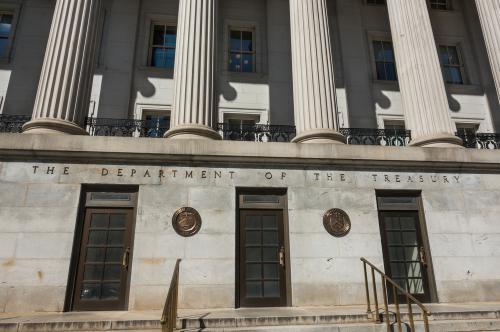Editor’s note: This post also appeared in Newsweek on May 24, 2015.
Recently, DC mayor Muriel Bowser announced that she has reached out to Dan Snyder, owner of the DC-area NFL team, about returning the team to the Nation’s Capital from its current location in suburban Maryland. Maryland Governor Larry Hogan has made clear that he wants the team to stay, and Virginia Governor Terry McAuliffe is aggressively courting the team to move to Virginia. This setup makes a bidding war likely, with each location promising a newer and fancier replacement stadium for the team’s current home.
Wherever the Washington team winds up, there’s little doubt that taxpayers – both locally and across the nation – will be on the hook for much of the stadium’s bill. Conventional wisdom is that the gains to the local economy from a stadium are worth the cost to local taxpayers. However, the evidence for this view is weak, and even weaker is any claim that federal taxpayers outside of the DC metropolitan area should also subsidize the location of a local team.
Despite the fact that new stadiums are often thought to boost local economic growth and job creation, these benefits are often overstated. Academic studies typically find no discernible positive relationship between sports facility construction and economic development. Most evidence suggests that sports subsidies cannot be justified on the grounds of local economic development, income growth, or job creation. In fact, after twenty years of academic research on the topic, “peer reviewed economics journals contain almost no evidence,” that sports stadiums or franchises measurably improve local economies.
To cite just one specific example, in the mid-1990s, the state of Maryland projected that a new football stadium in downtown Baltimore (now the home of the Baltimore Ravens) would create 534 jobs at $331,000 per job. The projected economic benefits of $33 million were only a fraction of the projected $177 million investment. It is therefore no surprise that economists overwhelmingly oppose sports subsidies.
Even if one buys the argument that local taxpayers win from subsidizing a team to locate in their area, there’s no reason that federal taxpayers should be part of this bidding war. Residents of, say, Wyoming, Maine, or Alaska, gain nothing whether the DC-area football team is lured to Washington or Virginia or Maryland. Yet, under current federal tax law, taxpayers throughout the country will wind up subsidizing the stadium, wherever it’s located. The future home of the DC-area’s NFL team will most likely be financed, at least in part, by the issuance of municipal bonds. Holders of municipal bonds pay no federal tax on the interest income, in effect providing a federal subsidy for the financing of a stadium for Snyder’s team.
President Obama recently proposed eliminating the tax exemption for interest on bonds that are used to finance sports stadiums, which would mean an estimated $542 million more in tax revenue between 2016 and 2025. And the President is hardly the first to consider this idea. When Congress last undertook major tax reform in 1986, the House’s version of the bill would have taxed interest income from bonds used to pay for stadiums, though that provision did not become law. Let’s hope Congress revisits the issue. While local football fans will undoubtedly be intensely interested in where the DC-area team will end up, there is no reason why fans and nonfans alike across the country should help subsidize the new stadium.
The Brookings Institution is committed to quality, independence, and impact.
We are supported by a diverse array of funders. In line with our values and policies, each Brookings publication represents the sole views of its author(s).



Commentary
Taxpayers beware: Bidding wars for NFL teams are losing bets
May 18, 2015